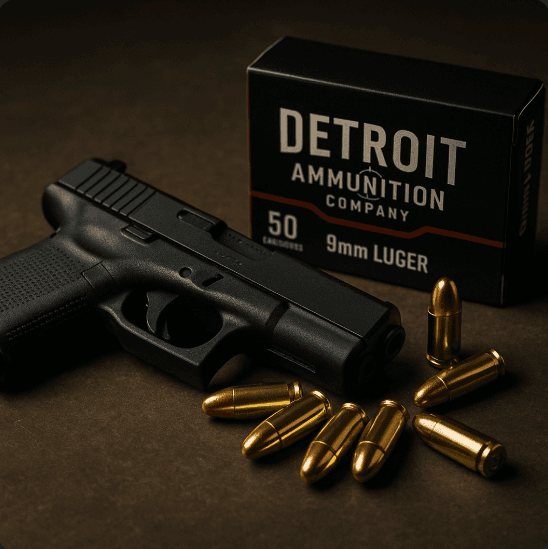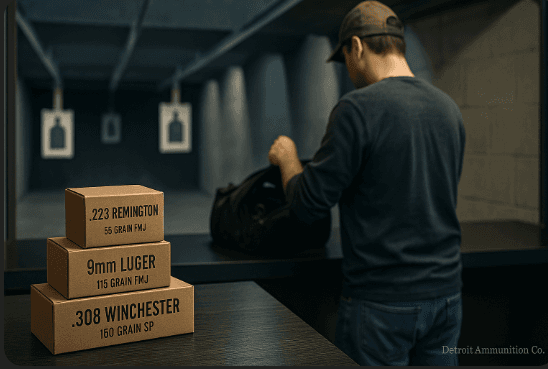Hunting Guide – Best Rifle Calibers for North American Big Game
Posted Nov 16, 2020
When it comes to big game hunting, what bullet you use can be just as critically important as the type of your firearm. Many factors impact a bullet’s performance; this includes its design, weight, and, of course, caliber. In regards to this last factor, we have created this short hunting guide to help you quickly determine the best caliber for each of the popular North American big game animals.
Deer
By big game standards, deer aren’t a ‘tough’ target, and hence, a large caliber isn’t required to kill them – even a .22 HORNET could potentially be used to kill them. But, with that said, from an ethical point of view, it is best to go with the caliber that gets the job done swiftly without the animal feeling any unnecessary pain.
While some of the readers may disagree and have their own caliber preference but we believe a 308 In to be the best caliber for deer hunting. Popular cartridges in this caliber include the highly popular .308 Winchester. Such cartridges are characterized by having both high muzzle energy and velocity but quiet manageable recoil. This allows for great accuracy at any hunting range, and a single shot will usually pack more punch to down a deer – be it the gentle whitetail or a brutish mule buck.
Hog
Hogs make for a surprisingly tenacious opponent, and the toughness of their hide shouldn’t be underestimated. For younger hogs, any caliber you use for deer hunting will work just fine, but for a fully grown feral boar, ideally, you will need one that packs in a bit more penetrating power. Our recommendation would be those in the .270 caliber such as the .270 Winchester.
Comparing the .270 Win with the .308 Win rounds, the former tends to exert greater pressure (up to 3000 psi more). Recoil on both is pretty identical but the .270 fires with a much greater muzzle velocity as well as showcases better energy retention over long distances.
Elk
Unlike their smaller deer cousins, elks are no easy game. A fully grown bull can reach sizes of up to 600 to 800 lbs. making them a fairly large animal. Elks are notorious for their toughness not just in terms of their hide but also their lasting power, not easily giving in when fatally injured. They can be very easy to lose track of, being able to plod away for miles before finally succumbing to injury.
Thus, both from an ethical and practical point of view, you should opt for a caliber that is powerful enough to kill the animal with a single, well-placed shot. Anything below .270 is not recommended, but the ideal caliber seems to be .300-In which includes the .300 Winchester Magnum and the .300 WBV. These bullets generally offer excellent penetration while also packing good stopping power. Compared to the standard .308 caliber bullet, at long range, a .300 tends to be significantly flatter in trajectory, aiding in your accuracy.
Black Bear
Despite their intimidating reputation, black bears aren’t actually difficult targets. In fact, the same caliber that you may use to kill a whitetail can be just as lethal against a black bear. Still, because of their slower heart rates, they won’t succumb to their wounds as quickly.
One would prefer to take out a black bear as cleanly and swiftly as possible. At short range, a well-placed shot from a .300 caliber should do the trick, but at longer ranges, a 6.5 caliber bullet such as the 6.5 Creedmoor might be better.
Alligator
Alligators have really tough hides but if you know where to aim, hunting them is not really that difficult. Being a slow, lumbering animal, they are quite easy to aim at and target. Its weakest point is at the back of its head, and you don’t need a particularly large caliber to get the job done. A .22 caliber like the .22 MAG should suffice.
Remember, aside from that kill spot, anywhere else on a fully grown alligator won’t easily kill it, even if you are using a much larger caliber. Thus, it is more a matter of which you can aim better with at short-range rather than which packs more punch.
Moose
Moose is one of the largest terrestrial beasts of North America. A fully grown adult bull moose can weigh as much as 1,400 lbs. and stand 7ft tall at its shoulders. However, to kill it, a heavy .308 bullet such as the 30-06 would be enough. Naturally, you would expect the moose, being a larger ungulate than the elk, to be more resilient but they actually aren’t. Still, for longer ranges (beyond 300 yards), to guarantee a clean kill, switch to a .300 caliber round such as the .300 Winchester Magnum.
Grizzlies
There is no North American game more dangerous yet exciting than the Grizzly bear. Compared to its relatively docile black cousin, the grizzly is highly aggressive and can easily absorb many bullets before finally being downed.
Arguably, as a responsible hunter, both for your safety as well as to cause the animal as less pain as possible, you should only tackle the bear from a well-advantaged position. Calibers in the .450 range such as the .45-70 Govt and the .450 Marlin are recommended. These rounds pack quite a nasty punch and are able to retain their velocity over the long-range immaculately.
Concluding Note
As mentioned, caliber is one of the many factors that decide a bullet’s performance. Shot placement is also critically important – even the most ideal bullet choice won’t be able to land a kill if it doesn’t hit at or near an animal’s vitals. We hope you found this short guide to be information and fun to read. Don’t forget to share it with others who may also find it to be helpful.


